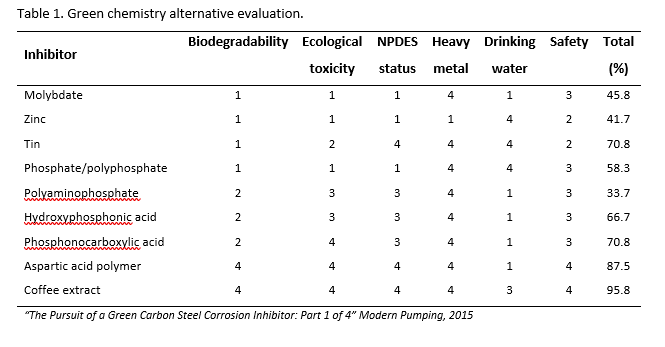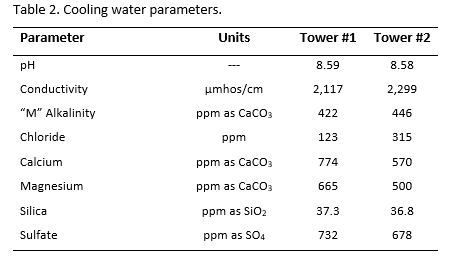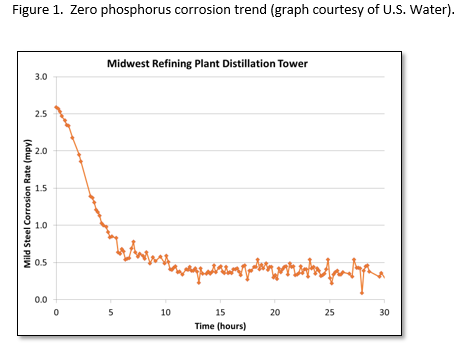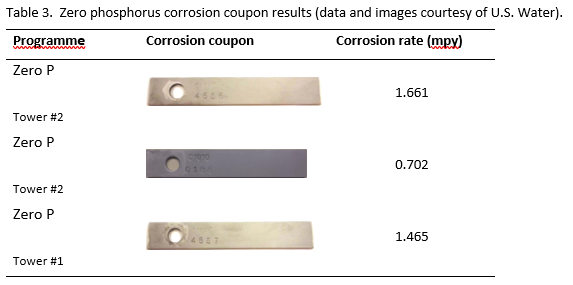Water Treatment
Technological advancements in cooling water treatment 23rd April 2018
By Mike Mowbray, U.S. Water’s Director of Product Management
The use of phosphorus-bearing compounds in industrial cooling water treatment has been common place since it replaced chromates
The use of phosphorus-bearing compounds in industrial cooling water treatment has been common place since it replaced chromates as corrosion inhibitors, but recent concerns and regulations regarding P discharge levels present a challenge to industry. Speciality chemical providers have been working to find a viable alternative. Once such example is U.S. Water’s unique cooling water treatment technology, PhosZero, a zero P cooling water chemistry.
In recent years, public and regulatory bodies have heightened their protection efforts for our natural resources in order to protect against excessive water usage and harm to the environment. For good reason, it is no longer acceptable for industry to simply open up their valves and discharge unregulated waste streams to the environment. Companies, and even municipalities, are now subject to thorough review and comment periods to justify a facility’s proposed discharge rates and water composition.
In the realm of water treatment, one area that has historically come up during the environmental review cycle is the evaluation of the additives used to treat cooling water systems. Chromate, a former chemical additive in cooling water treatment, was discovered to be carcinogenic and its use is now banned. Since the early 1970s, the use of phosphorus-bearing compounds in industrial cooling water treatment programs has been common place since it replaced chromates as corrosion inhibitors. Phosphorus, a common constituent of agricultural, municipal and industrial waste, is currently being reviewed by state agencies due to its impact on the eutrophication of lakes and other waterways.
A minor increase in phosphorus can fuel substantial increases in both aquatic plant and algae growth, which can have severe impacts on a community. Phosphorus can originate from municipal and industrial facilities that discharge water as well as runoff from agricultural areas that makes its way into local water sources. Many parts of the country are regulating the acceptable P discharge levels well below those commonly employed in traditional cooling water treatments for scale and corrosion control. This represents a significant challenge for facilities operating under direct discharge permits.
Typical alkaline all-organic cooling water programs where phosphonates are present as scale inhibitors can have phosphorus levels from 0.3-2.5 ppm, while stabilized phosphate programmes can have phosphorus levels as high as 6.0-7.0 ppm. Alternative corrosion inhibitor options may not be viable since they are often based on metals such as zinc (Zn) or molybdate (Mo) which are also being closely regulated in terms of acceptable discharge levels. Without an effective corrosion and deposit (scale) control program in place, industrial cooling systems could be compromised in a relatively short period of time. Facilities could experience significantly higher operating costs as well as potentially impact production capacities due to a loss of vacuum in the surface condensers, for example.
 ges facing the industry, specialty chemical providers have been diligently working to find an economically viable solution that can deliver the protection required. Suppliers have made non-metallic corrosion inhibitors commercially available, but these organic inhibitors are often based on low molecular weight polymers, phosphonates, and amino phosphonates. Some of these organic molecules have proven to be successful carbon steel corrosion inhibitors with improved environmental acceptability, but may have some technical concerns. Organic molecules may be more susceptible to oxidizing biocides than inorganic molecules. Many azole-based copper corrosion inhibitors are susceptible to degradation by oxidizing biocides. Hydroxyphosphonic acid has shown susceptibility to chlorine, even at low levels. This presents a problem because oxidizing biocides are a necessary part of any successful water treatment program for control of potentially harmful bacteria, such as Legionella. Organic inhibitors based on the phosphorus molecule do not meet the discharge requirement for P due to the reversion of some of the organic phosphonate to orthophosphate (O-PO4) and eventually P. Unfortunately many alternative programmes have failed to properly control the corrosion rates in systems without the use of P bearing inhibitors.
ges facing the industry, specialty chemical providers have been diligently working to find an economically viable solution that can deliver the protection required. Suppliers have made non-metallic corrosion inhibitors commercially available, but these organic inhibitors are often based on low molecular weight polymers, phosphonates, and amino phosphonates. Some of these organic molecules have proven to be successful carbon steel corrosion inhibitors with improved environmental acceptability, but may have some technical concerns. Organic molecules may be more susceptible to oxidizing biocides than inorganic molecules. Many azole-based copper corrosion inhibitors are susceptible to degradation by oxidizing biocides. Hydroxyphosphonic acid has shown susceptibility to chlorine, even at low levels. This presents a problem because oxidizing biocides are a necessary part of any successful water treatment program for control of potentially harmful bacteria, such as Legionella. Organic inhibitors based on the phosphorus molecule do not meet the discharge requirement for P due to the reversion of some of the organic phosphonate to orthophosphate (O-PO4) and eventually P. Unfortunately many alternative programmes have failed to properly control the corrosion rates in systems without the use of P bearing inhibitors.
Table 1 illustrates a ‘Green Chemistry’ alternative evaluation conducted by U.S. Water Services. It contains information related to the various alternatives where the values are the subjective ratings by the authors where 4 is the best score and 1 is the worst. Based on this information, U.S. Water developed a unique cooling water treatment technology, PhosZero, a zero phosphorus cooling water chemistry.

In order to ensure proper system protection, the corrosion rates were carefully monitored using corrosion coupons as well as an on-line corrator. The client wanted to maintain the same water efficiency (i.e. not reduce the cycles of concentration) which yielded a Langelier Saturation Index (LSI) of approximately 2.25. This LSI represents a relatively high scaling potential and the heat transfer surfaces were monitored closely as well. During the course of the entire trial there was no observed accumulation of scale that would impede the heat transfer efficiencies. Table 2 lists the pertinent cooling water values during the trial.

In this study, corrosion coupons were employed in addition to the corrator to monitor the cumulative corrosion rates over a 45-60 day exposure period. The results are summarized in Table 3. The results were better than anticipated and the primary objective of eliminating phosphorus from the cooling water chemical treatment program was attained. In addition, the zero phosphorus treatment program provided a significant reduction in the corrosion rates. The corrosion rates dropped from an average ~4 mpy to an average ~1.3 mpy.


Mike Mowbray, Director of Product Management at U.S. Water, 12270 43rd Street NE, St Michael, MN 55376, USA
T: +1 866 663 7633
www.uswaterservices.com


